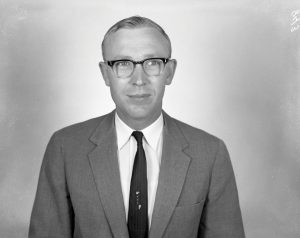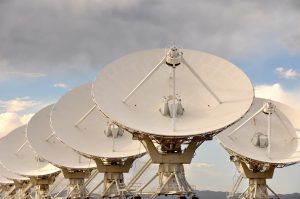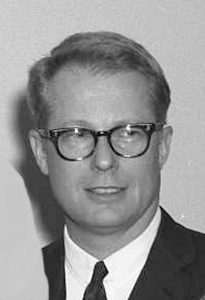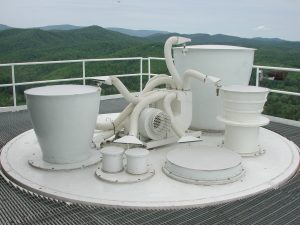Frank Drake was a Harvard-trained radio astronomer who came to NRAO in 1958 as one of our first astronomers in Green Bank, West Virginia. Drake set up our first millimeter-wave telescopes and pioneered the use of radio telescopes in the Search for Extraterrestrial Intelligence (SETI). His Project Ozma used the 85-foot Tatel telescope to observe the stars Tau Ceti and Epsilon Eridani for signs of civilization. None were ever found. Drake is well known for his thought experiment we now call the Drake Equation. It multiplies factors for finding life in our Galaxy based on physical and political variables. The Order of the Dolphin, a group of philosophically-minded scientists that included Nobel Laureate Melvin Calvin and Carl Sagan, convened in Green Bank in 1961 to discuss this equation.


David Heeschen
David Sutphin Heeschen became the third NRAO employee in 1957. Heeschen was Chair of the NRAO Astronomy Department, then NRAO Acting Director from 1961-1962, and finally Director from 1962-1978. Under his Directorship, the 140-foot and 300-foot telescopes and the interferometer were completed in Green Bank, the 36-foot telescope was built in Tucson, and the Very Large Array (VLA) in New Mexico was planned and designed. Heeschen was later Assistant Director for Tucson Operations, Assistant Director for Socorro Operations, and then Acting Project Manager during the initial phases the Green Bank Telescope (GBT) project until his 1991 retirement. To this day, the NRAO follows Heeschen’s “Open Skies” policy, whereby any competent scientist may propose for time on our telescopes.

Center of the Wye
When the Very Large Array (VLA) is at its smallest, nearly one mile across, one can stand in its center where its three arms meet and be greeted by this view. Each dish is 25 meters across — the length of two school buses parked end-to-end.

Campbell Wade
Campbell M. Wade came to Green Bank, West Virginia in 1960. He had been an astronomer trained at Harvard who had then worked at the Parkes Observatory in Australia. In Green Bank, he worked with David Heeschen performing surveys of galaxies to map their radio profiles. Wade was on the team that designed the Green Bank Interferometer (GBI) to test methods for what would become the Very Large Array. In 1965, he was first on the Plains of San Agustin in New Mexico testing it for site suitability. He later moved to Socorro for VLA construction, and was VLA director from 1978-1980. Before retirement, he worked on siting for the Very Long Baseline Array (VLBA) and the Millimeter Array (MMA), what would later become ALMA.

Aerial Shot of the Long Wavelength Array
Looking down on the 256 white, tent-shaped antennas of the Long Wavelength Array (LWA). Like the Very Large Array, the LWA combines the views of its individual antennas into impressive radio images of the sky. Unlike the VLA, however, the LWA antennas cannot dip or turn. To image different parts of the sky, the antennas rely on sophisticated electronics, software, and their four-sided faces.
The LWA is tuned to natural radio waves to observe pulsars that are below the range of FM radio broadcast channels, the Sun and its effects on the planets, and the most distant stars and galaxies in the Universe. In addition, the LWA also studies the radio-bouncing layer of our atmosphere, called the ionosphere.

A Buffet of Receivers
The receivers of the Green Bank Telescope sit in a revolving cabin called the turret. The feed horns poke above the cabin, and their receivers hang beneath them in a suspended building that tilts with the telescope. When an astronomer wants to observe the longest wavelengths at the GBT, the telescope operator spins the largest horn into the beam of radio waves bouncing from the sub-reflector above the turret. The feeds are covered in a radio-clear fabric to keep debris and rain out, and blowers keep the fabric dry and free of obstructions.





